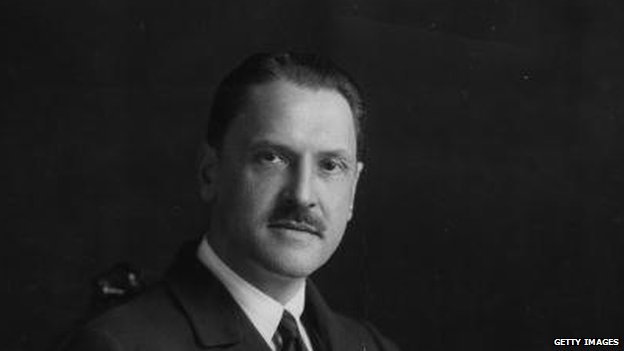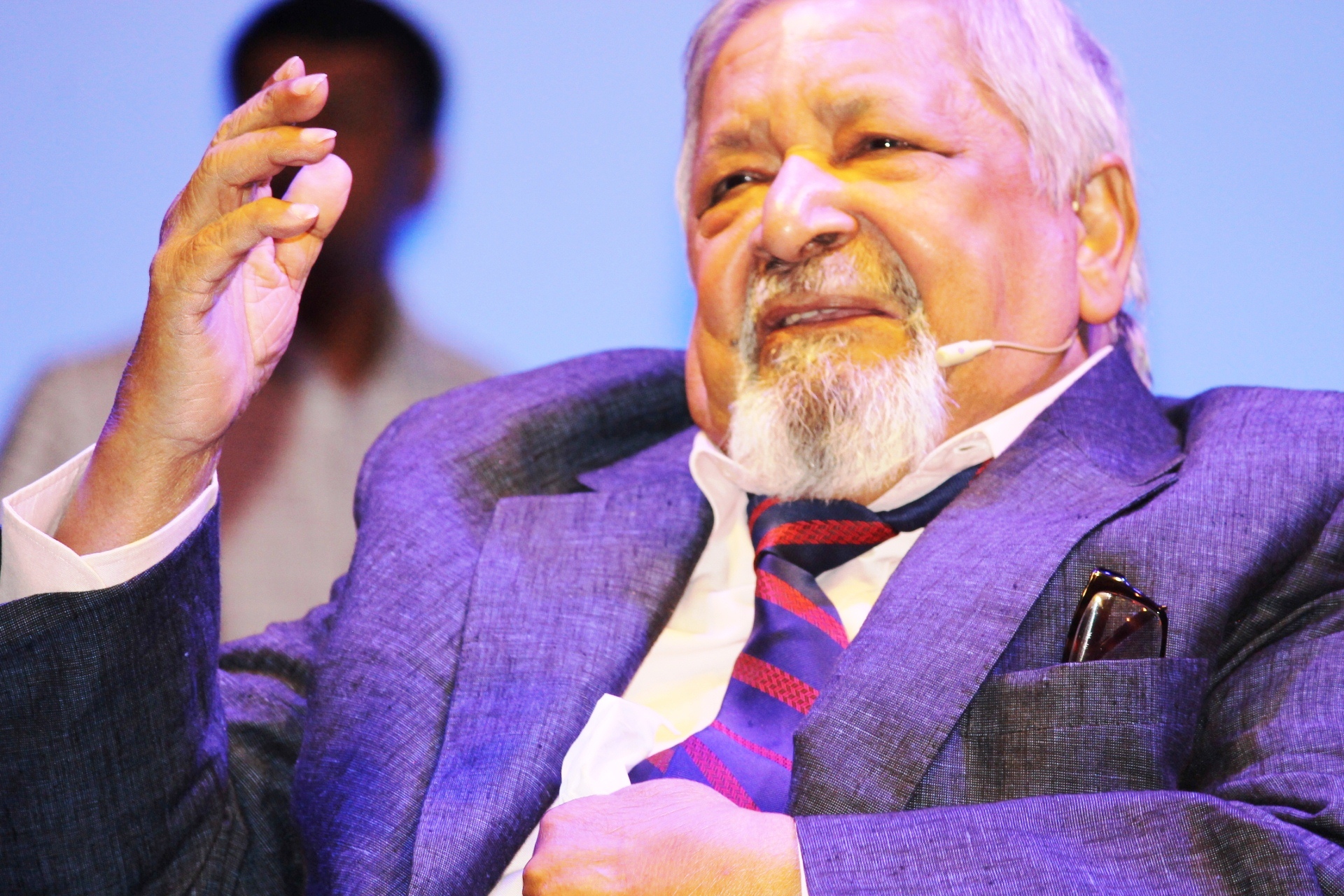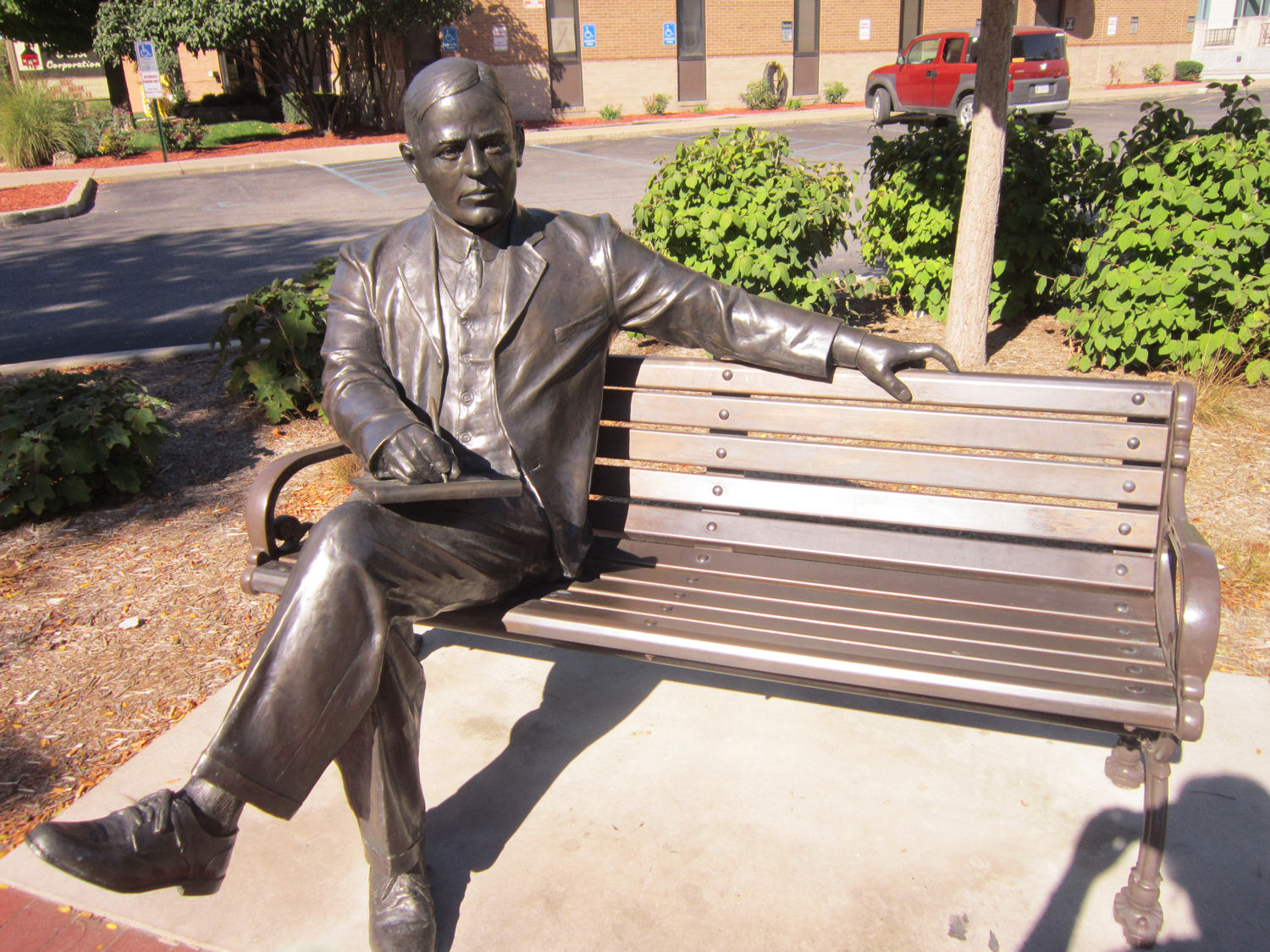In this The Sound Machine summary, we will briefly go over the plotline. The mad inventor, Klausner, obsessed with sound, has a theory. This theory states that beyond the realm of sounds that humans can hear lies a whole undiscovered body of sounds. These sounds are produced at such a high frequency that the human brain cannot possess them. And hence, to be able to hear these sounds, he creates a machine – a black box the size of a child’s coffin with wires, silver tubes, and dials that can convert these high-frequency sounds to lower-frequency notes that humans can hear. He shares this idea, reluctantly, with his doctor Scott who deems it implausible.
However, Klausner tries to test his machine in the garden, where he hears a painful shriek in his earphones. Looking around, he discovered that the shriek only came when his neighbour Mrs Saunders cut the stems of the yellow roses in her garden. Convinced that plants and trees made noises when getting cut, he went to a park to repeat the same experiment on a tree. As he swings his axe on the tree’s bark, it produces a long-drawn sob that sounds like a horrible growl. Nervous and flustered, he asks the only person who knew about his experiment, Doctor Scott, to hear the sounds he had heard on his machine to confirm their presence. However, as he tries to repeat the experiment, swinging another blow at the tree, a significant branch of the tree falls off, smashing the machine into pieces. More concerned about his safety, Doctor Scott removed his headphones and fled his spot, unable to hear the sound that the tree had made. Disappointed at the failure of his experiment, Klausner requests the doctor to rub some iodine on the gashes of the tree. Seeing the crazed state his patient is in, Doctor Scott agrees to Klausner’s demands. He scratches iodine on the tree and then carries Klausner back home.
The Sound Machine Summary
This The Sound Machine summary provides a detailed overview of the events that take place in the story.
On one warm summer evening, Klausner heads over to his workshop – a wooden shed at the back of his house to work on a small black box the size of a child’s coffin. As he bent over the box, he began tinkering with a mass of colourful wires and silver tubes that rested inside. For about an hour, he kept glancing back and forth at a paper and tugging gently at the cables to test the connections. With deep focus and buoyed upon a wave of breathless excitement, Klausner muttered to himself while his hands urgently moved inside the box and over the three dials at the front of the TV.
His work was interrupted by a visitor – his doctor, Scott, who had dropped into Klausner’s residence to check on his throat that had been bothering him. The doctor could sense the tension in the room, and he remarked to Klausner how he still had his hat on despite being indoors. He then peered into Klausner’s black box and asked if he was making a radio. Not satisfied with Klausner’s vague response that he was just fooling around and thoroughly intrigued by the complicated frightening-looking innards of the box, Scott insisted on knowing more. Awkwardly and reluctantly, Klausner agreed to divulge what he was working on. He revealed to Scott that he was trying to check the practical validity of a theory that he had. Klausner mentioned how the human ear was only capable of processing sounds that lay within a certain frequency bracket, which led to a whole unquantifiable body of low-pitched and high-pitched sounds that humans could not hear. Highly animated by his own train of thoughts, a nervous and flustered Klausner added that he believed that in the realm of sounds outside of human reach, new exciting music was always being made – music so powerful that it would drive people mad if only they could hear it. When a suspicious Scott professed to Klausner that his ideas sounded rather implausible, Klausner tried to change his mind by explaining to him how his invention, the sound machine, worked. His machine was designed to pick up on those high-pitched sound vibrations the human ear could not hear and convert them into a scale of tones audible to humans. Klausner then added that he would try to test his machine that night.
That night, Klausner took his machine to the garden. Consumed by excitement and nervousness, he plugged his headphone into the machine, pressed a switch to turn the device on, adjusted the knobs on the device, and bent forward intently to listen to sounds from that forbidden ultrasonic region where no ear had ever been before or had any right to visit. The little needle on his machine moved slowly, and Klausner jumped and almost fell off his seat as he heard a frightful piercing shriek. He studied his environs to spot only his neighbour Mrs Saunders in the garden next door, cutting yellow roses. He then attended the scream again – sharp, short, clear, cold, and with a slight metallic quality to it. Searching for the source of the sound, Klausner watched Mrs Saunders bend again to snip a rose. And right when the rose was cut, he heard the same frightening shriek again.
Klausner rushed over to Mrs Saunders, who was headed back towards her house, and frantically begged her to cut another rose. Mrs Saunders, who had always thought of Klausner as a strange, peculiar person, wondered if her neighbour had gone crazy. Nonetheless, she humoured him and proceeded to cut another rose. Once again, Klausner heard the same terrifying scream of pain and, in a nervous fit, began telling Mrs Saunders how she had been cutting through living things, making them scream in the most terrible way. Seeing how consumed Klausner was with the eccentric idea of rose stems crying out in pain, Mrs Saunders thought it best to rush back to her house.
To test his findings further, Klausner uprooted some white daisies on his lawn. Once again, he heard the same high-pitched cry, but this time he wasn’t sure if it was a cry of pain. The cry to him sounded neutral – a single emotionless note that conveyed nothing. Realizing that it had been the same with the roses, he concluded that perhaps it was not pain that the plants felt but some other emotion unknown to mankind.
The next day, early morning at six, Klausner carried his machine to a park to carry out his experiment on a large beech tree. And as he swung hard with an axe at the base of the trunk, cutting deep into the wood, he heard an enormous scream that was like a low-pitched growl – a drawn-out sob that lasted a minute. Scared by the pain he might have inflicted on the tree, he held the tree’s gash with his hands and apologized profusely to the tree.
Klausner then ran over to his house and telephoned Doctor Scott. He wanted somebody other than him to confirm his hypothesis. And although it was too early in the morning to leave the house, hearing the hysteria in Klausner’s voice, Scott decided to help his poor patient out with whatever he was struggling with.
While waiting for the doctor to arrive, Klausner’s mind began imagining the different horrific sounds different plants would make when being cut. He thought of the horror of hearing a wheat field getting mown and the horrible noises potatoes would make when getting yanked out of the ground. Klausner’s thoughts were put on hold with Scott’s arrival. He insisted that the doctor follow him to the tree he had maimed to hear what he had heard, for Scott was the only person who knew about Klausner’s experiment. However, this time when Klausner swung the axe hard, the severe blow caused a great branch to get severed and come crashing down on the machine. The doctor ripped off his headphone and moved away just in time to escape the blow. However, Klausner’s sound machine could not be saved and was smashed into pieces.
Klausner then turned to the doctor to ask him what he had heard. The doctor replied that he had managed to hear nothing, for he only had his headphone on for a second before making a mad dash for his life to prevent the branch from falling on him. A frustrated and dangerously insistent Klausner kept trying to coax more out of the doctor about anything extraordinary he might have heard. Still, in vain – the doctor had stepped away from the scene too soon.
An exasperated Klausner asked the doctor to stitch the tree’s wounds up in a threatening tone. When Scott explained that it was impossible to sew through wood, he insisted that the doctor at least rub some iodine on the tree’s gashes. Seeing that Klausner was in a possessed irrational state, the doctor agreed to his demands. Klausner then asked if the doctor would pay a visit to the tree the following day to check on it. Scott once again humoured Klausner to calm him down and readily agreed. Then the doctor carried Klausner back to his house to help him recover from the episode he had just had.
The Sound Machine Plot
The Sound Machine plot has for its exposition a frantic inventor Klausner trying to work on his machine. This device can make audible to humans those sounds of very high frequency that the human ear cannot ordinarily hear. The exposition ends with Klausner’s doctor, Scott paying him a visit and Klausner telling him about his invention. The rising action of the plot begins when Klausner takes his sound machine to the garden to test it. He hears a painful shriek every time his neighbour Mrs Saunders cuts a yellow rose from its stem. He tries to test his theory the next day on a big tree in the park and summons Scott to hear the sounds his machine is producing and confirm his hypothesis. The conflict stage of the plot begins when Klausner’s experiment to get Scott’s confirmation fails. When he tried to hit the tree with an axe, a branch of the tree fell, smashing the machine of Klausner into pieces. The plot’s climax comes when Klausner forces Doctor Scott to rub iodine over the tree’s gashes. In the falling action, Scott obeys Klausner’s orders, and the plot resolution takes place with Doctor Scott carrying his patient home to recover from the episode that had left him in a crazed state.
The Sound Machine Analysis and In-depth Explanation
This short story poses two pertinent questions. The first is whether or not Klausner was indeed successful in recording the sound trees and plants make when they are being cut. Nobody except Klausner hears those sounds, and before Doctor Scott can confirm Klausner’s hypothesis, his sound machine is shattered to pieces. This makes readers wonder if there was any validity to Klausner’s claims; and if he were just a lunatic so possessed with the idea of documenting high-frequency sounds that he imagined his machine doing the same.
The second question posed by the story is the impact we humans have on the plant world. If, indeed, Klausner’s claims were correct, and if plants and trees do cry out in pain when they are being cut, we are posed with the thought of the implications of our actions of ruthlessly cutting plants, hacking trees, and mowing field bears. The passage when Klausner imagines five hundred wheat plants screaming together in pain as they are being mown is indeed a nerve-wracking one. It makes one wonder about the pain we must cause plants and vegetables when they are uprooted by humans for consumption.
Another fascinating aspect of this short story is the human treatment provided by Dahl to the tree. When Klausner swings his axe across a beech tree, and it cries out in pain, he apologizes to the tree as if it were a real person. In fact, he also asks his doctor, Scott, to rub iodine over the gashes inflicted on the tree – as if the tree were a real wounded person. This sympathetic attitude of Klausner towards the tree triggers sympathy within us for these inanimate living things that cannot communicate their emotions. However, on the other hand, the readers also constantly question the soundness of Klausner’s mental state, as he was acting insane enough to ask his doctor to stitch up the wounds of the tree. This also makes us question if any of Klausner’s claims could be believed, for they all could be a product of his imagination and obsession with sounds.
The story is narrated in the third person, from the point of view of an omniscient narrator. Suspense is sustained well throughout the plot, and the readers are kept wondering all along about the mystery of the sounds Klausner hears, which remains unsolved till the very end. The language used by Roald Dahl is simple, with lengthy details about the main character and detailed commentary on the events in the story.
The Sound Machine Character Analysis
Klausner is described in the short story as a dreamy small man who always looks like his mind is not where his body is. This is because Klausner is always consumed with sound, trying to discover different realms of music that the human ear cannot process. His obsession with strange sounds forbidden to the human ear leads to his invention of the sound machine, which he claims can record sounds of high frequencies inaccessible to humans. However, his obsession with his machine takes the shape of madness when we find a flustered Klausner, almost threatening Scott to tell him what he heard when he hit a tree with an axe to confirm his hypothesis that plants let out a painful shriek when being cut. We understand that Klausner’s touch with reality is weak when he insists Doctor Scott rub iodine over the gashes on the tree. On the one hand, this gives us insights into Klausner’s deeply sensitive character. However, on the other hand, this gesture of Klausner also makes us question his mental state. Readers are left wondering if Klausner is a lunatic – something his doctor and his neighbour wonder about. Klausner’s unstable mental state also makes us question if the sounds he heard on his machine were real or were a product of his passion-drunk imagination.
Doctor Scott comes across as an understanding man who humours him despite finding Klausner’s theories about sound implausible, thus enabling him to open up about his good machine. Doctor Scott has excellent empathy for minds like that of Klausner, which are completely consumed by an obsession to prove something. Hence, he attends to Klausner’s call to confirm his experiment, even during the wee hours of the morning. Instead of judging Klausner harshly when he is having an episode and asking for iodine to be rubbed on the gashes on the tree, Doctor Scott humours him to pacify him and safely tries to escort the crazed patient back to his house.
The Sound Machine Theme
Obsession, tending towards insanity, is a prominent The Sound Machine theme. In this short story, we have the character of a crazed inventor Klausner, who is consumed with his idea of turning very high-frequency sounds audible to the human ear. His deep passion is such that he goes into a dreamy dazed state every time he talks about his idea. He loses all sense of social decorum when conducting his experiments, urgently asking his neighbour to cut flowers for him to study the sounds made by plants and later asking his doctor and confidant Scott to meet him early in the morning to confirm his hypothesis. So consumed was Klausner with the sound machine that he lost all touch with reality, focusing only on the results of his experiments. This is why he lost his cool when Scott told him that he had not heard any sounds on the machine, for he was busy saving himself from the branch that was about to fall on him. Scientists are often portrayed as mad beings possessed by their ideas. With obsession as the central theme of the short story, Klausner’s characterization is no exception in this regard. He is the prototype of a mad scientist trying to focus on his experiment, wholly disconnected from the world.
Empathy is another central theme that is explored in the short story. Although Klausner hurts flowers and trees in the process of his experiment, he is not without empathy, and his heart cries out for the plight of the plants and trees that are cut. He has great empathy for mown wheat fields and hence decides never to experiment with his sound machine on wheat fields, for the sound of a host of wheat plants crying would drive him crazy, and he would never be able to bread after that. Empathy is a trait we find in Doctor Scott, who humours him and his experiments despite understanding that Klausner is playing with madness. Sometimes, people consumed by their rage only need an audience, and Scott provided the same to Klausner.
The Sound Machine by Roald Dahl is a brilliant piece of science fiction that explores the theme of obsession and the possibility that plants feel pain when they are being cut for use or consumption. Through this short story, we discover the workings of a passionate mind devoted to proving a hypothesis to the point of madness. The short story also raises issues concerning the maddening pain plants go through when they are cut from their roots. The way Roald Dahl has spun this fantasy of a crazed inventor makes for a truly engaging read that explores ideas humans don’t necessarily think about.
Updated by Anjali Roongta on 10th April 2023
Some online learning platforms provide certifications, while others are designed to simply grow your skills in your personal and professional life. Including Masterclass and Coursera, here are our recommendations for the best online learning platforms you can sign up for today.
The 7 Best Online Learning Platforms of 2022
- Best Overall: Coursera
- Best for Niche Topics: Udemy
- Best for Creative Fields: Skillshare
- Best for Celebrity Lessons: MasterClass
- Best for STEM: EdX
- Best for Career Building: Udacity
- Best for Data Learning: Pluralsight













